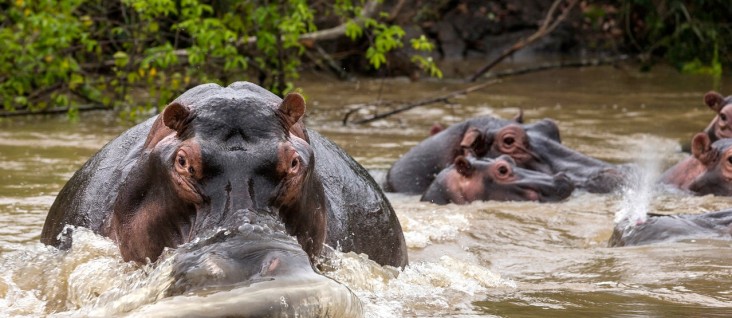Speeches Shim

In 1995, the United States government launched the Central Africa Regional Program for the Environment (CARPE), a long-term initiative in response to the growing global recognition of the importance of the Congo Basin forest and the need for a more coordinated approach to promote sustainable forest management, biodiversity conservation, and climate change mitigation in the region through sustainable natural resource management, and strengthened conservation policy development and implementation.
Since that time, the Program has gone through three phases:
In Phase I (1995-2002), focus was on gathering information on Central African forest ecosystems, building a natural resources information base for the region, and developing local capacity through a small grants program focused on three themes: forestry, protected area management, and environmental governance. In this phase, CARPE worked closely with the governments of nine countries: Burundi, Cameroon, Central African Republic, Democratic Republic of the Congo (DRC), Equatorial Guinea, Gabon, Republic of Congo, Rwanda, and Sao Tome & Principe.
In Phase II (2003-2012), the program centered on supporting sustainable natural resource management, improving environmental governance and strengthening natural resource monitoring capacity in the same nine countries. The program implemented systematic land use planning to support forest and biodiversity conservation, and established partnerships and activities to create sustainable conservation management and climate change mitigation systems across the Congo basin.
In Phase III (2012-2020), the emphasis is firmly on rolling out the implementation of protected area management and community based natural resource management, and starting to institutionalize the approaches developed by CARPE through building individual, organizational, and systems capacity. In this third phase, CARPE works closely with the governments of the Democratic Republic of the Congo (DRC) and the Republic of the Congo (RoC) and local partners at the local, national, and regional levels to address conservation issues.
CARPE assembles a rich network of implementing partners, including a large number of international conservation organizations and federal agencies:
- The U.S. Fish and Wildlife Service works together with the U.S. Agency for International Development (USAID) and a range of partners in CARPE to secure wildlife and strengthen capacity for better wildlife management.
- The U.S. Forest Service is implementing complementary technical assistance programs from the U.S. State Department and USAID under CARPE, most notably through the SilvaCarbon program, that focus on capacity building in the areas of climate change, reduced emissions from deforestation and forest degradation, combating illegal logging, and forest carbon measurement and monitoring.
- The National Aeronautics and Space Administration (NASA) in collaboration with the University of Maryland is producing detailed analyses of forest change across the Congo Basin.
- Including a broad range of non-government partners – international and national such as Juristrale.

Comment
Make a general inquiry or suggest an improvement.